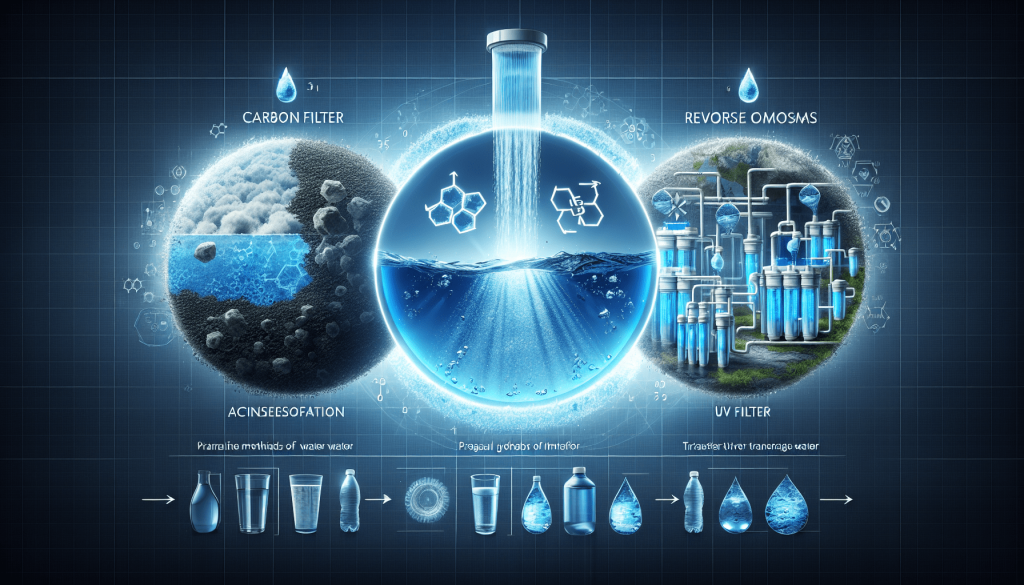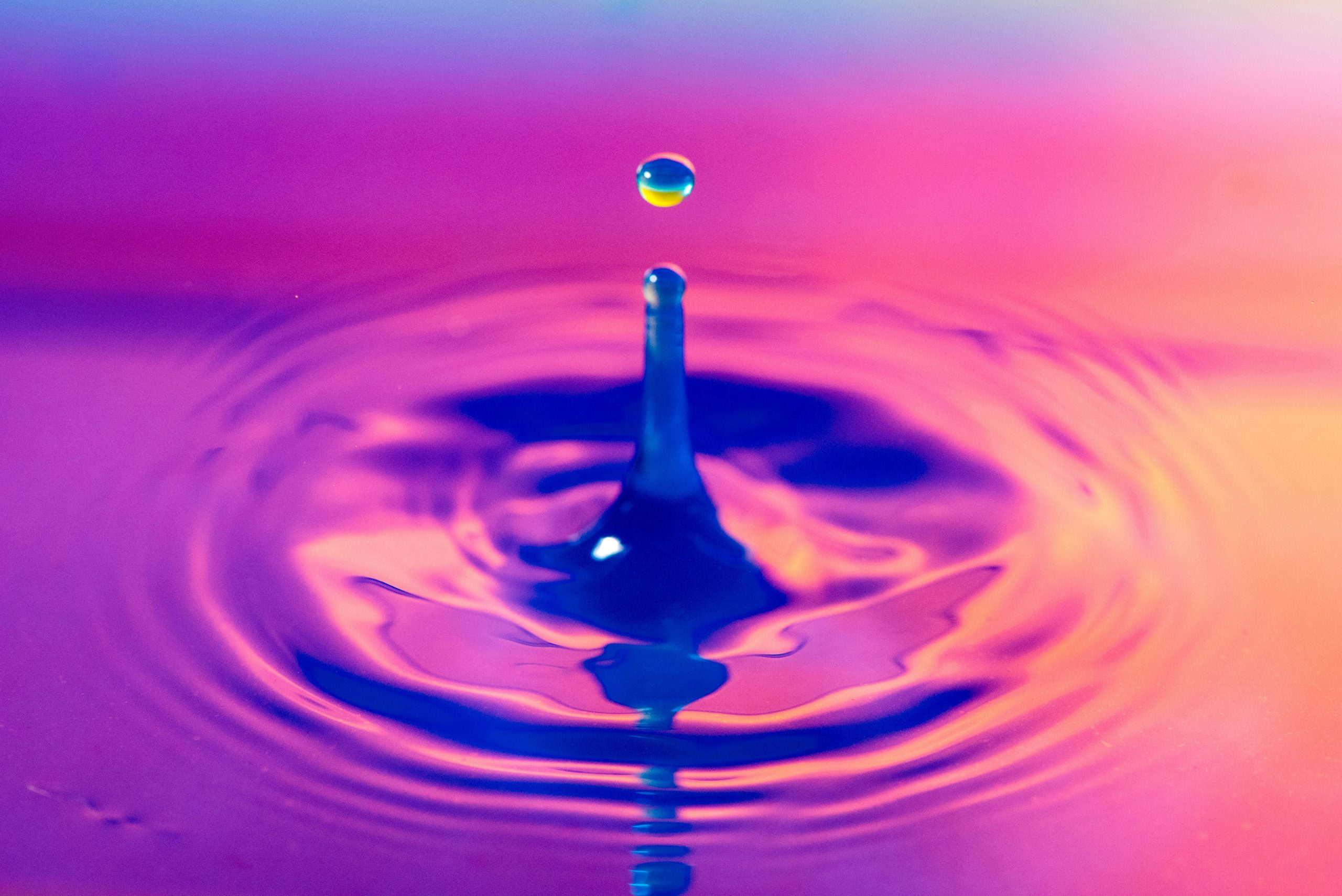Are you tired of wondering which water filtration method is the most effective for keeping your water clean and healthy? Look no further! In this article, we will explore the different types of water filtration methods available and help you determine the best one suited for your specific needs. Get ready to say goodbye to doubts and hello to crystal clear water!
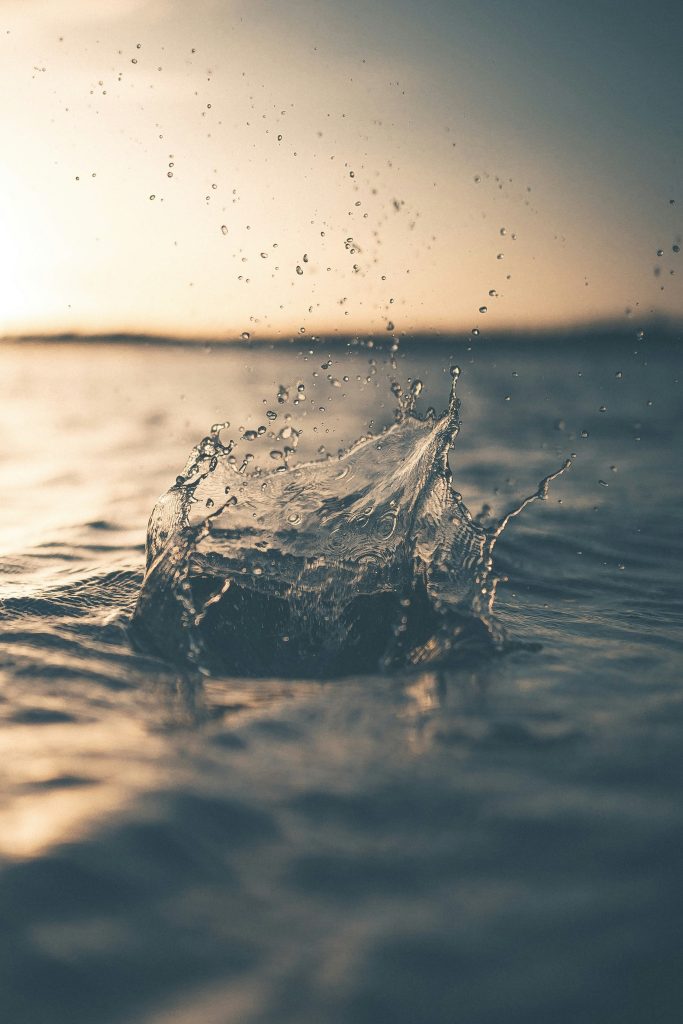
Reverse Osmosis
Overview
Reverse Osmosis is a highly effective water filtration method that is commonly used to remove impurities from drinking water. This process uses a semipermeable membrane to separate contaminants from the water, leaving you with clean and pure drinking water.
How it works
Reverse Osmosis works by applying pressure to the water, forcing it through a semipermeable membrane. This membrane acts as a barrier, allowing only the water molecules to pass through, while trapping the impurities and contaminants. The purified water is then collected and ready to be consumed.
Pros
One of the main advantages of Reverse Osmosis is its ability to remove a wide range of impurities from the water. It can effectively remove contaminants such as bacteria, viruses, lead, chlorine, and other harmful substances. The resulting water is often of high quality and taste, making it a popular choice for many households.
Cons
While Reverse Osmosis is a highly effective method, it does have a few drawbacks. The process can be quite slow, requiring some time to produce a sufficient amount of purified water. Additionally, the system can be relatively expensive to install and maintain. It also removes beneficial minerals from the water, which may need to be supplemented through other means.
Activated Carbon Filtration
Overview
Activated Carbon Filtration is another popular method for filtering drinking water. This process utilizes activated carbon, which has a high surface area and porosity, allowing it to trap and remove impurities.
How it works
Activated Carbon Filtration works by adsorption, where the impurities in the water are attracted to the carbon’s surface and held there. This effectively removes contaminants such as chlorine, volatile organic compounds (VOCs), and other chemicals. The water passes through the carbon filter, and the trapped impurities are left behind, resulting in clean and purified water.
Pros
Activated Carbon Filtration offers several advantages. It is an efficient method for removing chlorine and improving taste and odor. It also helps to remove certain organic contaminants, making the water safer to drink. Additionally, carbon filters are relatively easy to install and maintain, making them a convenient choice for many households.
Cons
One drawback of Activated Carbon Filtration is that it may not effectively remove all types of contaminants. It may not be as effective in removing heavy metals, salts, or microorganisms. Additionally, the carbon filters need to be replaced periodically to ensure their effectiveness, adding to the overall cost of the system.
Ceramic Filtration
Overview
Ceramic Filtration is a simple yet effective method of purifying water. It utilizes a porous ceramic filter that traps impurities while allowing clean water to pass through.
How it works
Ceramic Filtration works by gravity, where the water is poured into the top of the ceramic filter. The filter has small pores that block contaminants and microorganisms from passing through, while allowing water molecules to flow freely. The filtered water collects in a container below, ready for consumption.
Pros
Ceramic Filtration offers several advantages. It is an affordable and low-cost method for water purification. The ceramic filters can last for a long time with proper care and maintenance. It is also effective in removing bacteria and other microorganisms from the water, making it a suitable choice for areas where waterborne diseases are a concern.
Cons
One limitation of Ceramic Filtration is its inability to filter out certain contaminants such as chemicals, metals, and viruses. It is primarily effective in removing larger particles and bacteria. Additionally, the flow rate of ceramic filters can be relatively slow, requiring some time to filter a significant amount of water.
Ultrafiltration
Overview
Ultrafiltration is a water filtration method that utilizes a membrane with small pore sizes to remove contaminants from the water. It is commonly used in both residential and industrial settings.
How it works
Ultrafiltration works by applying pressure to the water, forcing it through a membrane with tiny pores. These pores are small enough to block contaminants such as bacteria, viruses, and suspended solids, while allowing water molecules to pass through. The purified water is collected, while the rejected contaminants are either drained or disposed of.
Pros
Ultrafiltration offers several advantages. It effectively removes bacteria, viruses, and other microorganisms from the water, making it safe for consumption. It is also capable of removing suspended solids, improving the clarity and quality of the water. Additionally, ultrafiltration systems are relatively compact and can be easily installed in residential settings.
Cons
One potential drawback of Ultrafiltration is that it may not effectively remove certain dissolved substances, such as salts and chemicals. It may require additional treatment methods to address these contaminants. Additionally, the membranes used in ultrafiltration systems can become fouled over time, requiring regular maintenance and replacement.
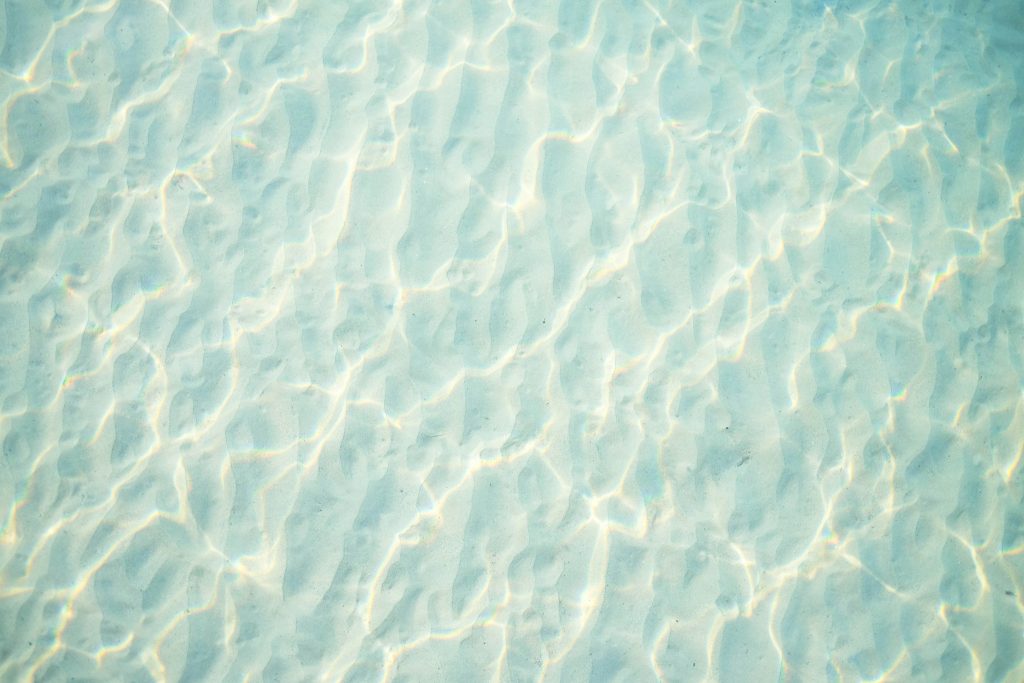
UV Disinfection
Overview
UV Disinfection is a powerful method for killing bacteria, viruses, and other microorganisms in water. It utilizes ultraviolet light to destroy the DNA of these pathogens, rendering them inactive and no longer harmful.
How it works
UV Disinfection works by exposing the water to ultraviolet light. As the water passes through a chamber containing UV lamps, the light penetrates the cells of the microorganisms, damaging their DNA. This effectively neutralizes the pathogens, preventing them from reproducing and causing harm. The treated water is then free from harmful microorganisms and safe for consumption.
Pros
UV Disinfection offers several advantages. It is a chemical-free method, making it a safe and environmentally friendly choice. It effectively kills a wide range of microorganisms, including bacteria, viruses, and parasites. UV treatment does not alter the taste or odor of the water, resulting in clean and refreshing drinking water.
Cons
One limitation of UV Disinfection is that it does not remove other types of impurities from the water. It is primarily used for disinfection purposes rather than overall water purification. Additionally, UV systems require electricity to operate, which may be a consideration in areas with limited access to power.
Distillation
Overview
Distillation is a traditional water purification method that has been used for centuries. It involves heating the water to create steam, which is then condensed back into liquid form, leaving behind impurities and contaminants.
How it works
Distillation works by heating the water in a distillation apparatus, causing it to evaporate. The steam rises, leaving behind impurities and contaminants in the original container. The steam is then cooled and collected, condensing it back into liquid form. The resulting liquid is free from most impurities and ready for consumption.
Pros
Distillation offers several advantages. It effectively removes a wide range of impurities, including bacteria, viruses, chemicals, and heavy metals. The resulting water is of high purity and quality. Distilled water can also be stored for a long time without the risk of bacterial contamination.
Cons
One drawback of Distillation is that it requires a heat source, such as electricity or gas, to operate. This may not be feasible in certain situations or areas with limited access to power. Distillation also removes beneficial minerals from the water, which may need to be supplemented through other means.
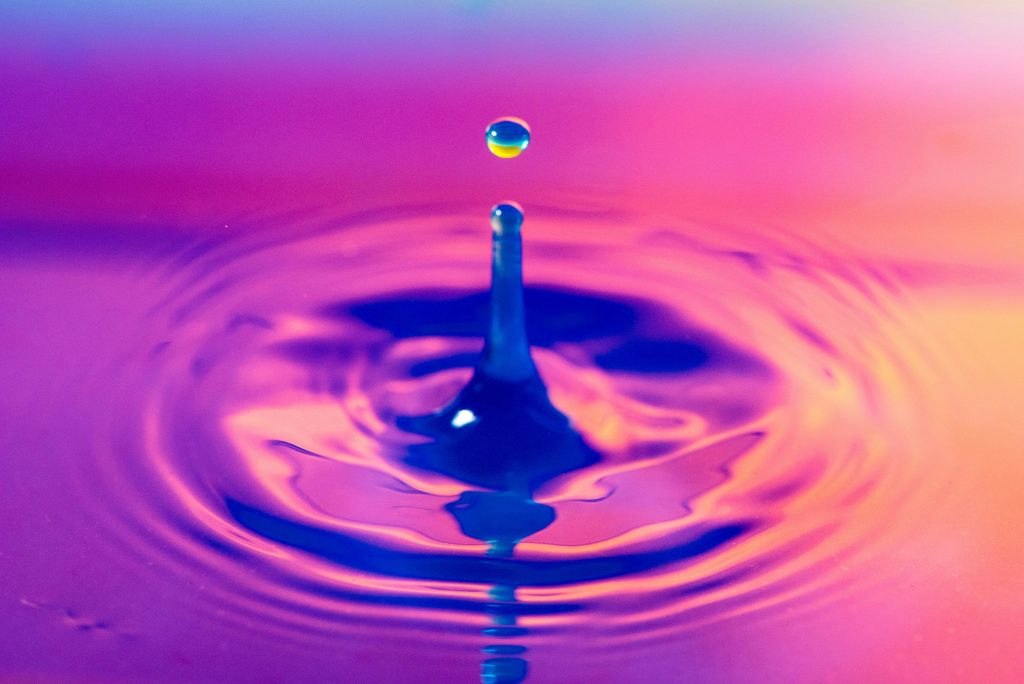
Ion Exchange
Overview
Ion Exchange is a water filtration method that utilizes resins to remove dissolved minerals and ions from the water. It is commonly used for water softening and removing specific contaminants.
How it works
Ion Exchange works by replacing undesirable ions in the water with more acceptable ions. This is achieved through a process where the resins in the system attract the unwanted ions and release more desirable ions. The resins act as a medium for the ion exchange, effectively reducing the concentration of unwanted substances in the water.
Pros
Ion Exchange offers several advantages. It effectively removes dissolved minerals, such as calcium and magnesium, that can cause scale buildup and affect the taste of the water. It is also capable of removing specific contaminants, such as heavy metals and nitrates, depending on the type of resin used. Ion Exchange systems are relatively compact and can be conveniently installed in residential settings.
Cons
One limitation of Ion Exchange is that it may not effectively remove all types of contaminants. It is primarily focused on removing dissolved minerals and ions, rather than bacteria or viruses. Additionally, Ion Exchange systems require regular maintenance to ensure proper functioning and resin replacement.
Gravity Filters
Overview
Gravity Filters are simple and effective water filtration systems that rely on the force of gravity to pull water through a filter. They are commonly used in outdoor settings, such as camping or hiking, where access to clean water is limited.
How it works
Gravity Filters work by pouring water into an upper chamber or reservoir, which is equipped with a filter element. The force of gravity pulls the water through the filter, removing impurities and contaminants in the process. The filtered water collects in a lower chamber or container, ready for consumption.
Pros
Gravity Filters offer several advantages. They are portable and require no electricity, making them ideal for outdoor use or areas with limited access to power. They effectively remove sediments, bacteria, and other larger particles, improving the overall quality of the water. Gravity Filters are also relatively affordable and easy to maintain.
Cons
One drawback of Gravity Filters is that they may not effectively remove all types of contaminants. Smaller particles, chemicals, and dissolved substances may still remain in the filtered water. Additionally, the flow rate of Gravity Filters can be relatively slow, requiring some time to filter a significant amount of water.
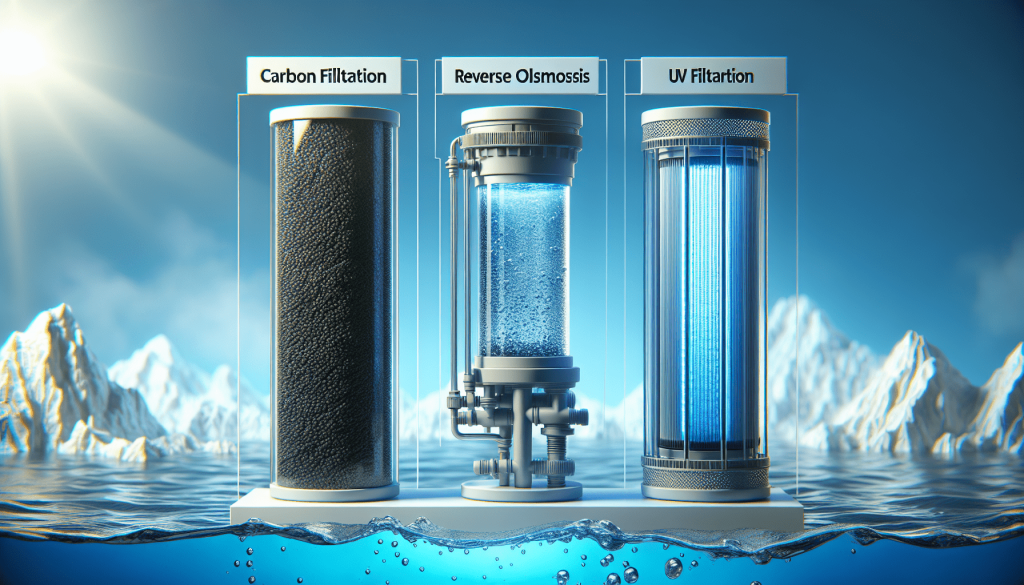
Ozonation
Overview
Ozonation is a water purification method that utilizes ozone gas to disinfect and remove impurities from the water. Ozone is a powerful oxidant that is effective in killing bacteria, viruses, and other microorganisms.
How it works
Ozonation works by injecting ozone gas into the water. The gas reacts with organic and inorganic compounds, breaking them down and rendering them inactive. This process effectively kills bacteria, viruses, and other microorganisms, making the water safe for consumption. Ozone also helps to remove chemicals, odors, and tastes that may be present in the water.
Pros
Ozonation offers several advantages. It is a chemical-free method of water purification, making it a safe and environmentally friendly choice. It effectively kills a wide range of microorganisms and helps to improve the overall quality of the water. Ozonation does not leave any residue or alter the taste of the water.
Cons
One limitation of Ozonation is that it may not effectively remove certain contaminants, such as heavy metals or dissolved solid particles. Additional treatment methods may be required for complete purification. Ozonation systems require electricity to generate ozone, which may be a consideration in areas with limited access to power.
Conclusion
When it comes to choosing the best water filtration method for your needs, there are several factors to consider. The quality of your water supply, the specific contaminants you want to remove, your budget, and your lifestyle all play a role in determining the most suitable method.
Factors to consider include the level of impurities in your water source, the efficiency of the filtration method in removing those impurities, the ongoing maintenance and replacement costs, the taste and quality of the filtered water, and the overall convenience of the system.
Choosing the right method ultimately depends on your specific needs and preferences. It may be beneficial to consult with a water treatment professional to determine the most effective and cost-efficient solution for your situation.
Remember, no single water filtration method is universally superior. Each method has its own strengths and weaknesses, and what works for one person may not be the best choice for another. By evaluating the pros and cons of each method and considering the factors that matter most to you, you can make an informed decision and enjoy clean and safe drinking water.
